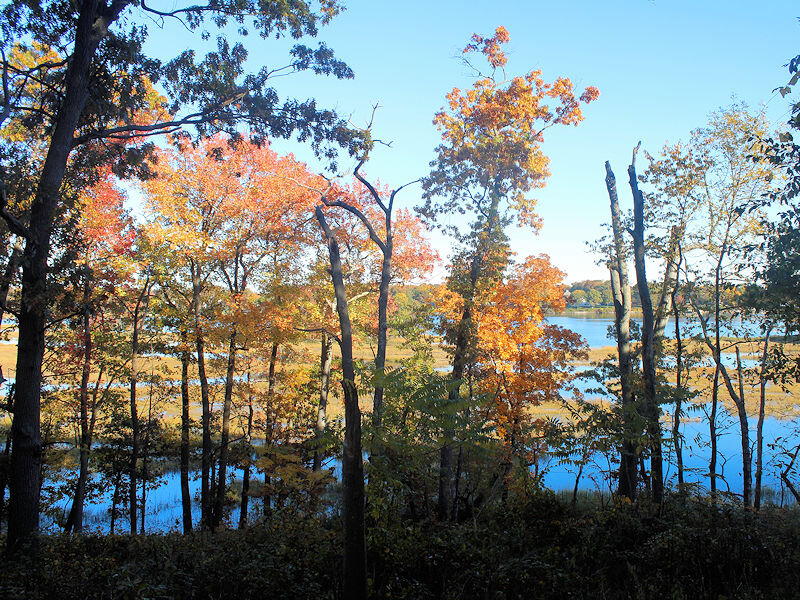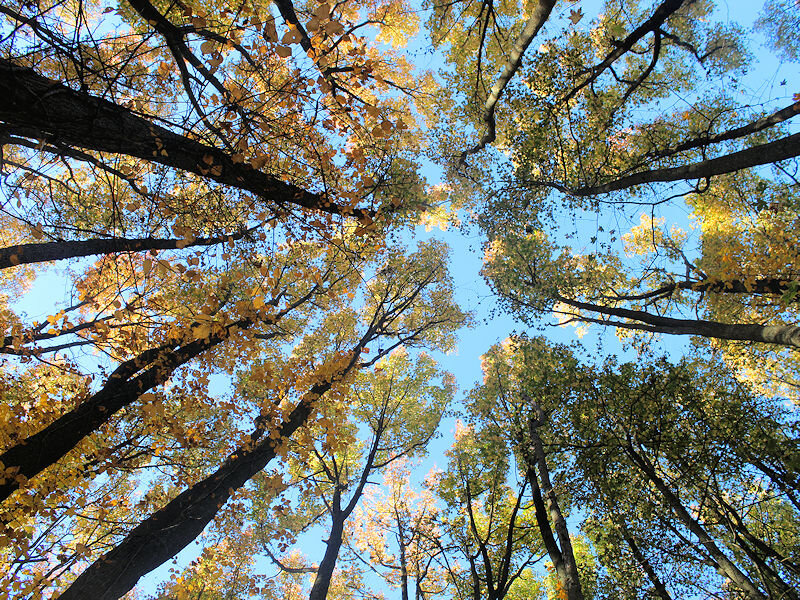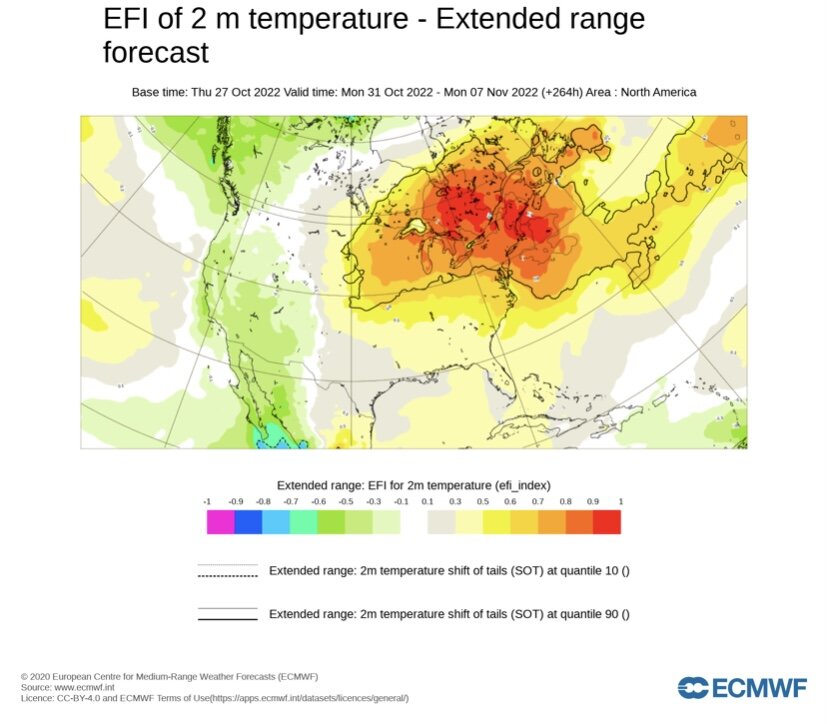-
Posts
22,983 -
Joined
Content Type
Profiles
Blogs
Forums
American Weather
Media Demo
Store
Gallery
Everything posted by donsutherland1
-
Thank you.
- 1,381 replies
-
Under clear skies and a flood of sunshine, the mercury recovered from a cold start to the upper 50s and lower 60s across the region. Temperatures will continue to moderate tomorrow. Unseasonable warmth will return early next week. The first week of November will likely be much warmer than normal. The potential exists for the first week to see a mean temperature of 60.0° or above in New York City. Since 1869, there have been just 7 prior years with such warmth during the first week of November: 1938, 1961, 1974, 1975, 1994, 2003, and 2015. All of those cases saw a warmer to much warmer than normal November with a mean monthly temperature of 50.3° (lowest: 48.2°, 1974; highest: 52.8°, 2015). On a standardized basis, 6/7 (86%) cases were 0.5 sigma or more above the 30-year moving average (implied 49.4° average for the most recent 30-year period) and 4/7 (57%) were 1.0 sigma or more above the 30-year moving average (implied 51.0° average for the most recent 30-year moving average). Overall, November will likely be warmer than normal. There was no clear seasonal snowfall outcome following such a warm start to November. Four cases saw less than 20" of seasonal snowfall (1961-1962, 1974-1975, 1975-1976, and 1994-1995); three cases saw more than 30" of seasonal snowfall (1938-1939, 2003-2004, and 2015-2016). The lowest seasonal snowfall occurred in 1994-95 when 11.8" fell. The highest amount was 42.6" in 2003-2004. The ENSO Region 1+2 anomaly was -1.4°C and the Region 3.4 anomaly was -0.8°C for the week centered around October 19. For the past six weeks, the ENSO Region 1+2 anomaly has averaged -1.42°C and the ENSO Region 3.4 anomaly has averaged -0.83°C. La Niña conditions will likely persist through the fall. The SOI was +19.98 today. The preliminary Arctic Oscillation (AO) was +1.988 today. On October 27 the MJO was in Phase 6 at an amplitude of 1.729 (RMM). The October 26-adjusted amplitude was 1.968 (RMM). Based on sensitivity analysis applied to the latest guidance, there is an implied near 100% probability that New York City will have a cooler than normal October (1991-2020 normal). October will likely finish with a mean temperature near 56.8° (1.1° below normal).
- 1,381 replies
-
- 1
-

-
Under crystal clear skies and brilliant sunshine, the temperature rose into the upper 50s and even lower 60s across the region. Fall foliage is increasing in coverage in southern Westchester County. Some photos:
- 1,381 replies
-
- 5
-

-
The 10 days will be warm, but the first week could be even warmer overall.
- 1,381 replies
-
- 1
-

-
Tomorrow will be partly sunny and cool. Temperatures will again stay in the 50s in most of the region. Temperatures will begin to moderate on Sunday. Unseasonable warmth will return early next week. The first week of November will likely be much warmer than normal. The ENSO Region 1+2 anomaly was -1.4°C and the Region 3.4 anomaly was -0.8°C for the week centered around October 19. For the past six weeks, the ENSO Region 1+2 anomaly has averaged -1.42°C and the ENSO Region 3.4 anomaly has averaged -0.83°C. La Niña conditions will likely persist through the fall. The SOI was +33.65 today. The old record was +19.08 from 2005. The preliminary Arctic Oscillation (AO) was +1.373 today. On October 26 the MJO was in Phase 7 at an amplitude of 1.967 (RMM). The October 25-adjusted amplitude was 1.839 (RMM). Based on sensitivity analysis applied to the latest guidance, there is an implied 97% probability that New York City will have a cooler than normal October (1991-2020 normal). October will likely finish with a mean temperature near 56.9° (1.0° below normal).
- 1,381 replies
-
Morning thoughts… Today will be partly sunny and cool. High temperatures will reach the upper 50s in most of the region. Likely high temperatures around the region include: New York City (Central Park): 57° Newark: 58° Philadelphia: 61° Tomorrow will e noticeably cooler. Normals: New York City: 30-Year: 60.2°; 15-Year: 60.9° Newark: 30-Year: 61.6°; 15-Year: 62.2° Philadelphia: 30-Year: 62.7°; 15-Year: 62.8°
- 1,381 replies
-
- 1
-

-
The first week of November continues to look exceptionally warm, especially in parts of Ontario, Quebec, and New England. The New York City area remains on track for a much warmer than normal November 1-7.
- 1,381 replies
-
- 2
-

-
A cold front moved across the region earlier today. In its wake, slightly cooler air moved into the region. Overnight, it will turn much cooler. Tomorrow will be partly sunny and cool. Temperatures will stay in the 50s in most of the region. The weekend will also begin with cooler than normal readings but temperatures will be moderating by Sunday. Unseasonable warmth will return early next week. November could begin with warmer than normal temperatures. The ENSO Region 1+2 anomaly was -1.4°C and the Region 3.4 anomaly was -0.8°C for the week centered around October 19. For the past six weeks, the ENSO Region 1+2 anomaly has averaged -1.42°C and the ENSO Region 3.4 anomaly has averaged -0.83°C. La Niña conditions will likely persist through the fall. The SOI was +21.01 today. The preliminary Arctic Oscillation (AO) was +1.082 today. On October 25 the MJO was in Phase 7 at an amplitude of 1.839 (RMM). The October 24-adjusted amplitude was 1.887 (RMM). Based on sensitivity analysis applied to the latest guidance, there is an implied 92% probability that New York City will have a cooler than normal October (1991-2020 normal). October will likely finish with a mean temperature near 56.9° (1.0° below normal).
- 1,381 replies
-
Morning thoughts… Today will be mostly sunny and a bit cooler. High temperatures will reach the lower and middle 60s in most of the region. Likely high temperatures around the region include: New York City (Central Park): 64° Newark: 65° Philadelphia: 66° Tomorrow will e noticeably cooler. Normals: New York City: 30-Year: 60.6°; 15-Year: 61.2° Newark: 30-Year: 61.9°; 15-Year: 62.6° Philadelphia: 30-Year: 63.1°; 15-Year: 63.2°
- 1,381 replies
-
Tomorrow will be partly sunny and somewhat cooler. Readings will return to near normal or somewhat below noral levels to end the week. However, more warmth will likely return to start next week. With the MJO in Phase 6 at a high amplitude and the Arctic Oscillation forecast to be positive for the closing week of the month, the closing week of October could feature above to much above normal temperatures. November could begin with warmer than normal temperatures. The ENSO Region 1+2 anomaly was -1.4°C and the Region 3.4 anomaly was -0.8°C for the week centered around October 19. For the past six weeks, the ENSO Region 1+2 anomaly has averaged -1.42°C and the ENSO Region 3.4 anomaly has averaged -0.83°C. La Niña conditions will likely persist through the fall. The SOI was +0.71 today. The preliminary Arctic Oscillation (AO) was +1.558 today. On October 24 the MJO was in Phase 6 at an amplitude of 1.890 (RMM). The October 23-adjusted amplitude was 1.860 (RMM). Based on sensitivity analysis applied to the latest guidance, there is an implied 90% probability that New York City will have a cooler than normal October (1991-2020 normal). October will likely finish with a mean temperature near 56.9° (1.0° below normal).
- 1,381 replies
-
It would be even warmer were there fewer clouds. Up in Quebec, record highs are widespread. Yesterday, Montreal hit 77°, its latest such temperature on record. Through 1 pm, it has a daily record 72° today.
- 1,381 replies
-
- 1
-

-
JFK will probably come in close to normal perhaps a few tenths of a degree above. LGA, NYC, and EWR will be below normal, though LGA might wind up within 0.5° of normal.
- 1,381 replies
-
- 1
-

-
I'm using the 1991-2020 normals, which are warmer than the prior 1981-2010 ones.
- 1,381 replies
-
- 1
-

-
Yes. The prior record of 77° was set in 2001.
- 1,381 replies
-
- 1
-

-
The afternoon will be similar to yesterday. There will be some breaks in the clouds in some areas.
- 1,381 replies
-
- 1
-

-
Morning thoughts… Today will be mostly cloudy with some early fog and drizzle. High temperatures will reach the upper 60s and lower 70s in most of the region. Likely high temperatures around the region include: New York City (Central Park): 70° Newark: 71° Philadelphia: 71° Cooler air could return late in the week. Normals: New York City: 30-Year: 60.9°; 15-Year: 61.2° Newark: 30-Year: 62.3°; 15-Year: 63.0° Philadelphia: 30-Year: 63.4°; 15-Year: 63.6°
- 1,381 replies
-
- 1
-

-
78 degrees.
- 1,381 replies
-
- 1
-

-
There was an extended period of below normal readings.
- 1,381 replies
-
- 1
-

-
The latest ECMWF weekly forecast suggests that the New York City area will see temperatures run 3°C-6°C (5.4°F-10.8°F) above normal during the first week of November. Such warmth has typically indicated a warmer than normal November.Parts of E. Canada will be even warmer.
- 1,381 replies
-
- 5
-

-

-
Morning fog lifted and the clouds broke for a time. As a result, the mercury rose into the 70s in many parts of the region this afternoon. Highs included: Islip: 75° New York City-Central Park: 70° New York City-JFK: 73° Newark: 73° Philadelphia: 70° Tomorrow will be another variably cloudy and warm day following some fog and drizzle. With the MJO in Phase 6 at a high amplitude and the Arctic Oscillation forecast to be positive for the closing week of the month, the closing week of October could feature above to much above normal temperatures. November could begin with warmer than normal temperatures. The ENSO Region 1+2 anomaly was -1.4°C and the Region 3.4 anomaly was -0.8°C for the week centered around October 19. For the past six weeks, the ENSO Region 1+2 anomaly has averaged -1.42°C and the ENSO Region 3.4 anomaly has averaged -0.83°C. La Niña conditions will likely persist through the fall. The SOI was +12.44 today. The preliminary Arctic Oscillation (AO) was +1.558 today. On October 23 the MJO was in Phase 6 at an amplitude of 1.860 (RMM). The October 22-adjusted amplitude was 1.536 (RMM). Based on sensitivity analysis applied to the latest guidance, there is an implied 83% probability that New York City will have a cooler than normal October (1991-2020 normal). October will likely finish with a mean temperature near 57.1° (0.8° below normal).
- 1,381 replies
-
- 2
-

-
It could. Merbok likely altered the pattern leading to 3-4 weeks of generally below normal temperatures.
- 1,381 replies
-
- 1
-

-
October will be 0.5-1.5 degrees below normal across the area. There’s a stronger correlation between December and seasonal snowfall than temperatures.
- 1,381 replies
-
- 1
-

-
Morning thoughts… Today will be mostly cloudy with some showers and drizzle. High temperatures will reach the upper 60s in most of the region. Likely high temperatures around the region include: New York City (Central Park): 68° Newark: 69° Philadelphia: 71° Cooler air could return late in the week. Normals: New York City: 30-Year: 61.2°; 15-Year: 61.6° Newark: 30-Year: 62.7°; 15-Year: 63.4° Philadelphia: 30-Year: 63.8°; 15-Year: 64.0°
- 1,381 replies
-
- 1
-

-
That’s the way it currently looks. Whether it turns colder late in the month remains to be seen.
- 1,381 replies
-
- 2
-

-
Although the ongoing system has generally produced less rainfall than modeled, a few locations saw more than 0.50" of rain. Through 5 pm, Philadelphia had picked up 0.72" today. Islip had received 1.16". Tomorrow will be variably cloudy and warmer. Additional showers are possible. Wednesday will be another warm day. With the MJO having come out of Phase 6 at a high amplitude and the Arctic Oscillation forecast to be positive for the closing week of the month, the closing week of October could feature above to much above normal temperatures. November could begin with warmer than normal temperatures. The ENSO Region 1+2 anomaly was -2.0°C and the Region 3.4 anomaly was -0.8°C for the week centered around October 12. For the past six weeks, the ENSO Region 1+2 anomaly has averaged -1.33°C and the ENSO Region 3.4 anomaly has averaged -0.87°C. La Niña conditions will likely persist through the fall. The SOI was +22.75 today. The preliminary Arctic Oscillation (AO) was +1.664 today. On October 22 the MJO was in Phase 7 at an amplitude of 1.535 (RMM). The October 21-adjusted amplitude was 1.386 (RMM). Based on sensitivity analysis applied to the latest guidance, there is an implied 75% probability that New York City will have a cooler than normal October (1991-2020 normal). October will likely finish with a mean temperature near 57.2° (0.7° below normal).
- 1,381 replies
-
- 1
-









